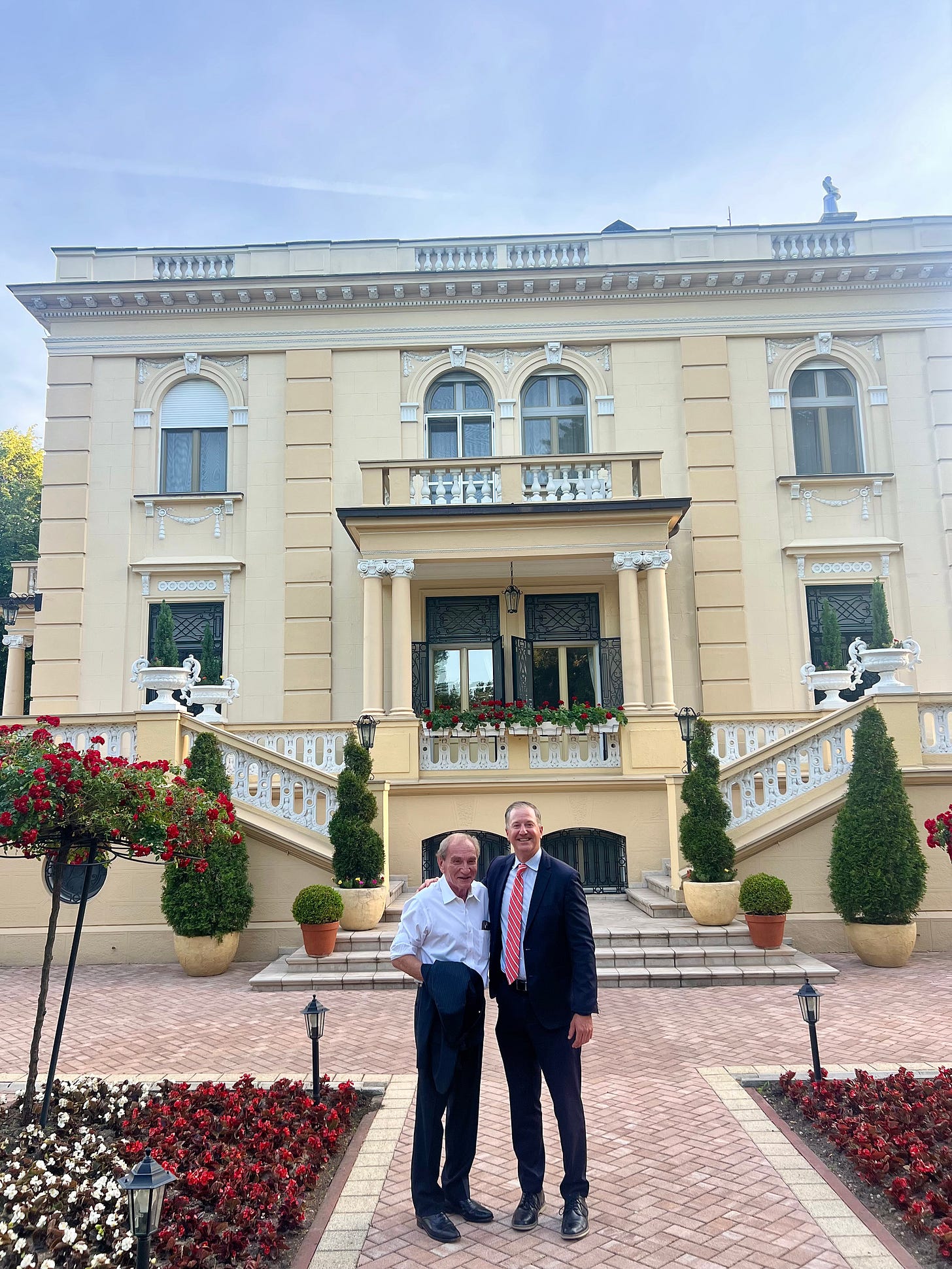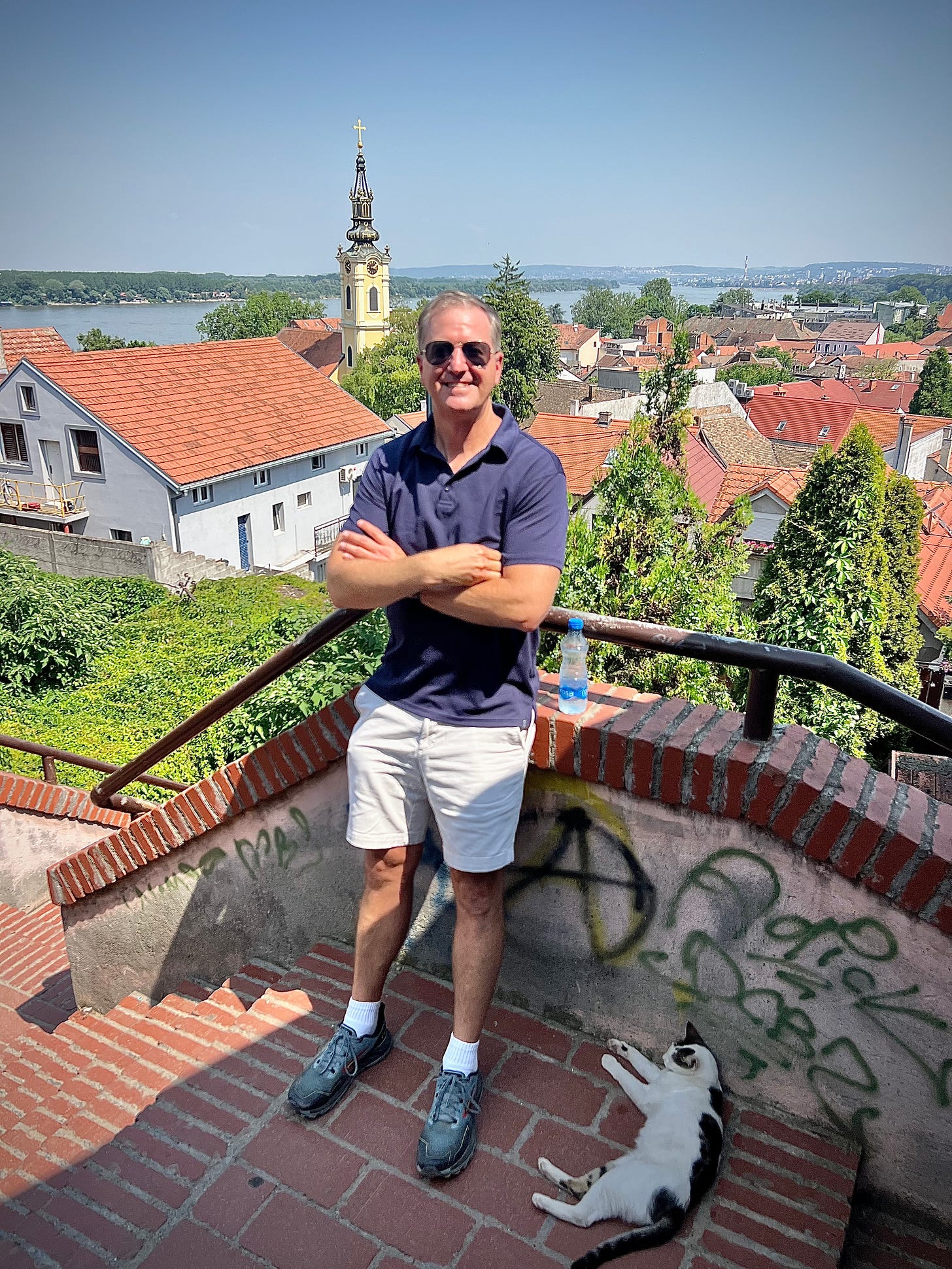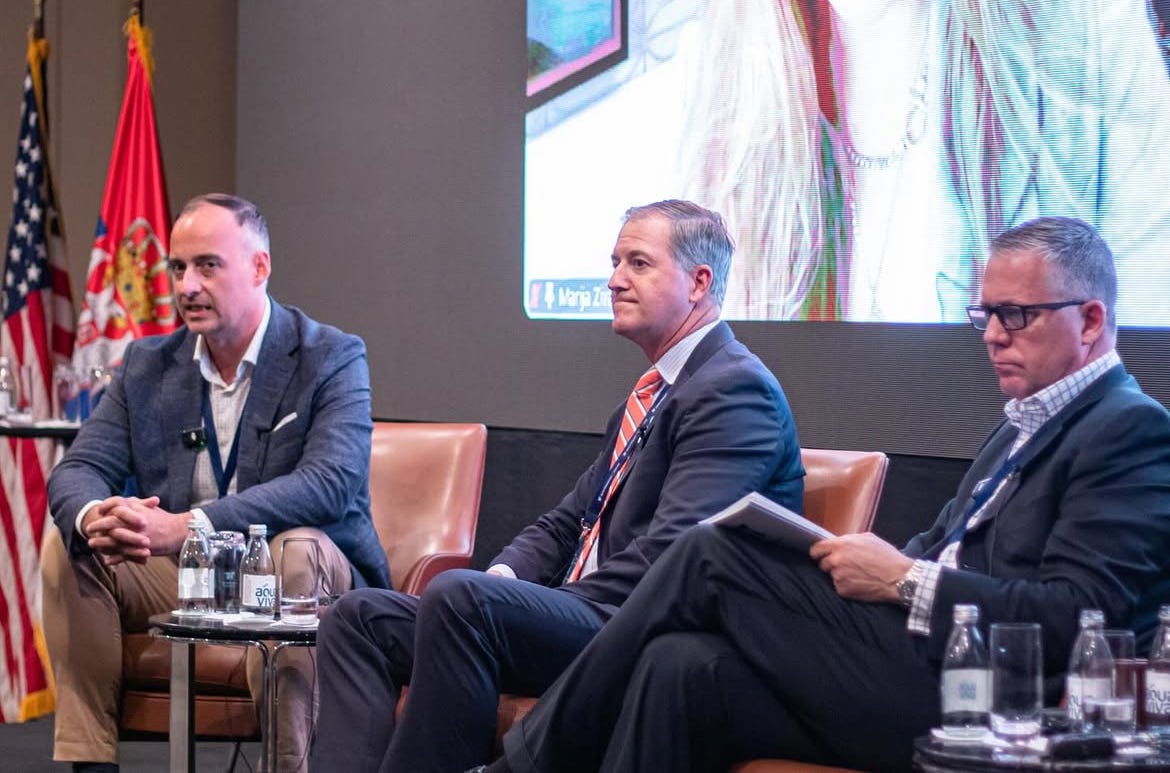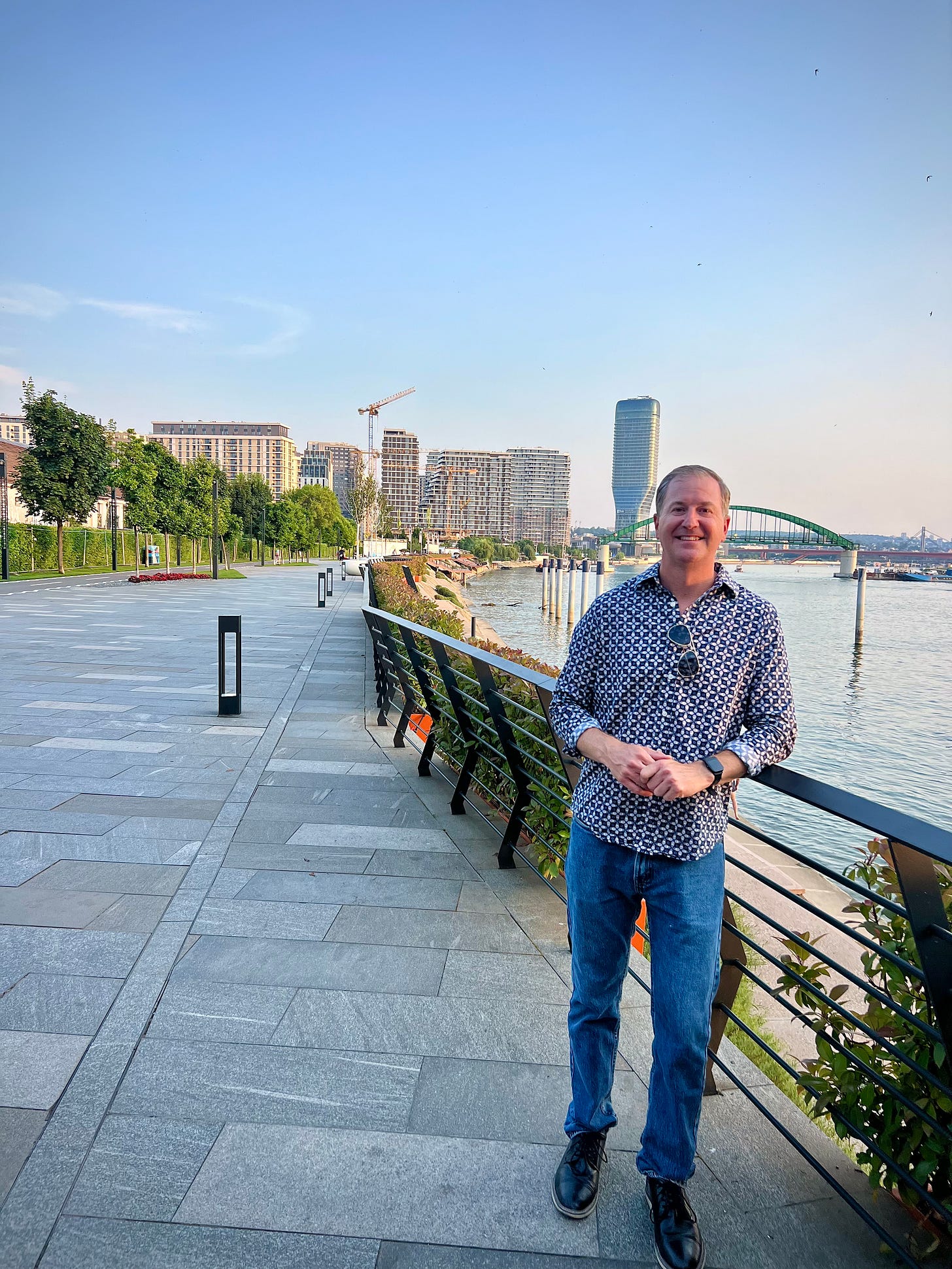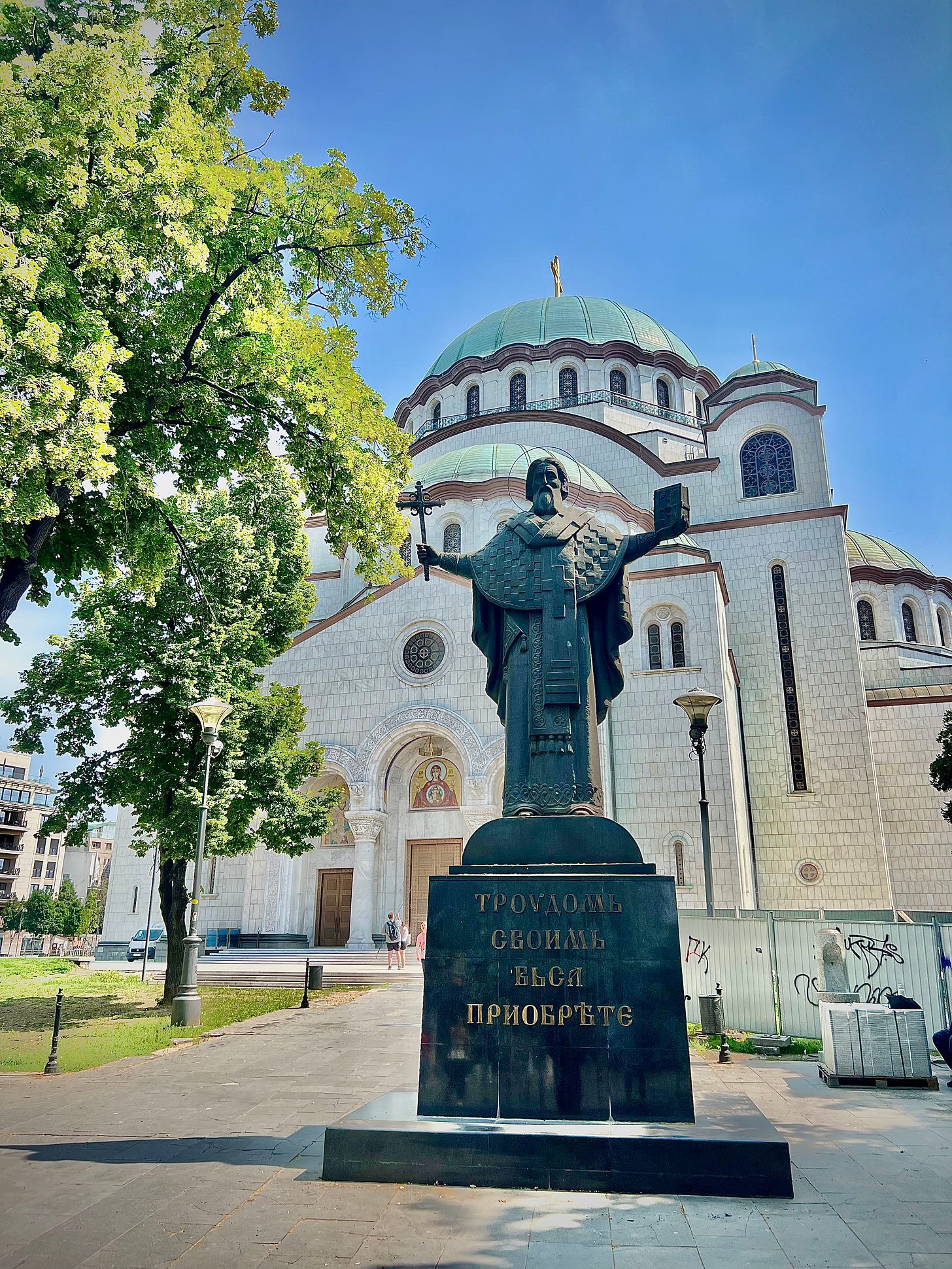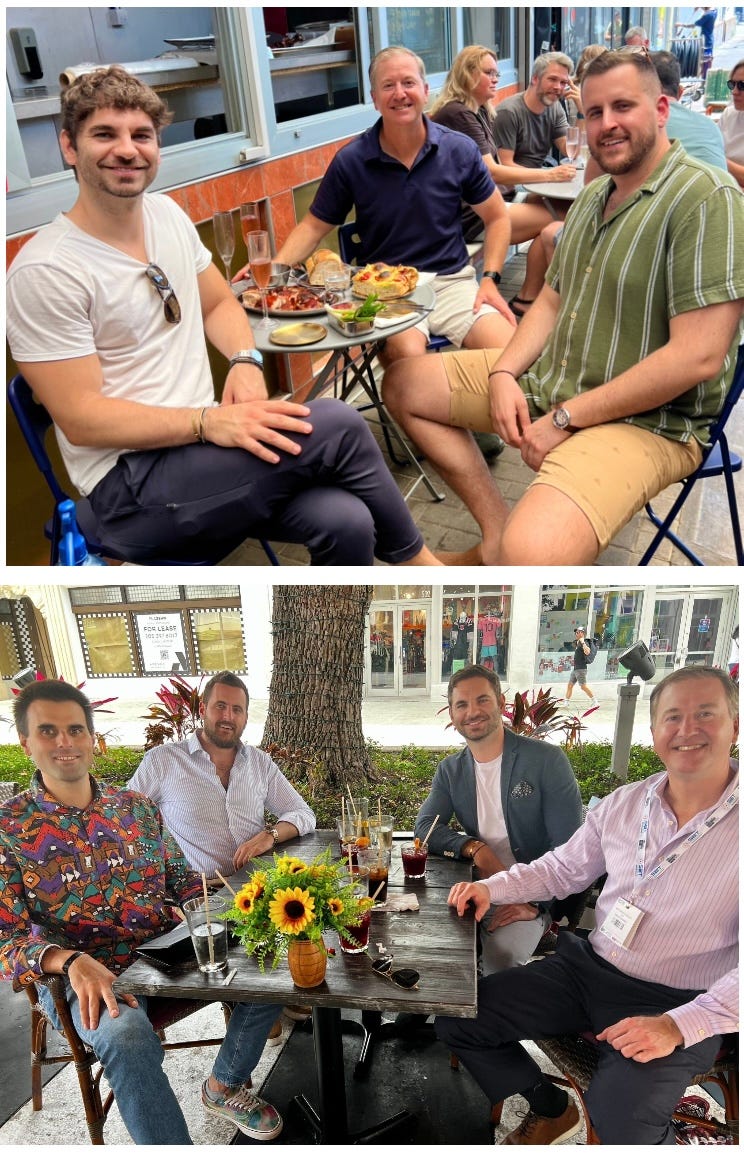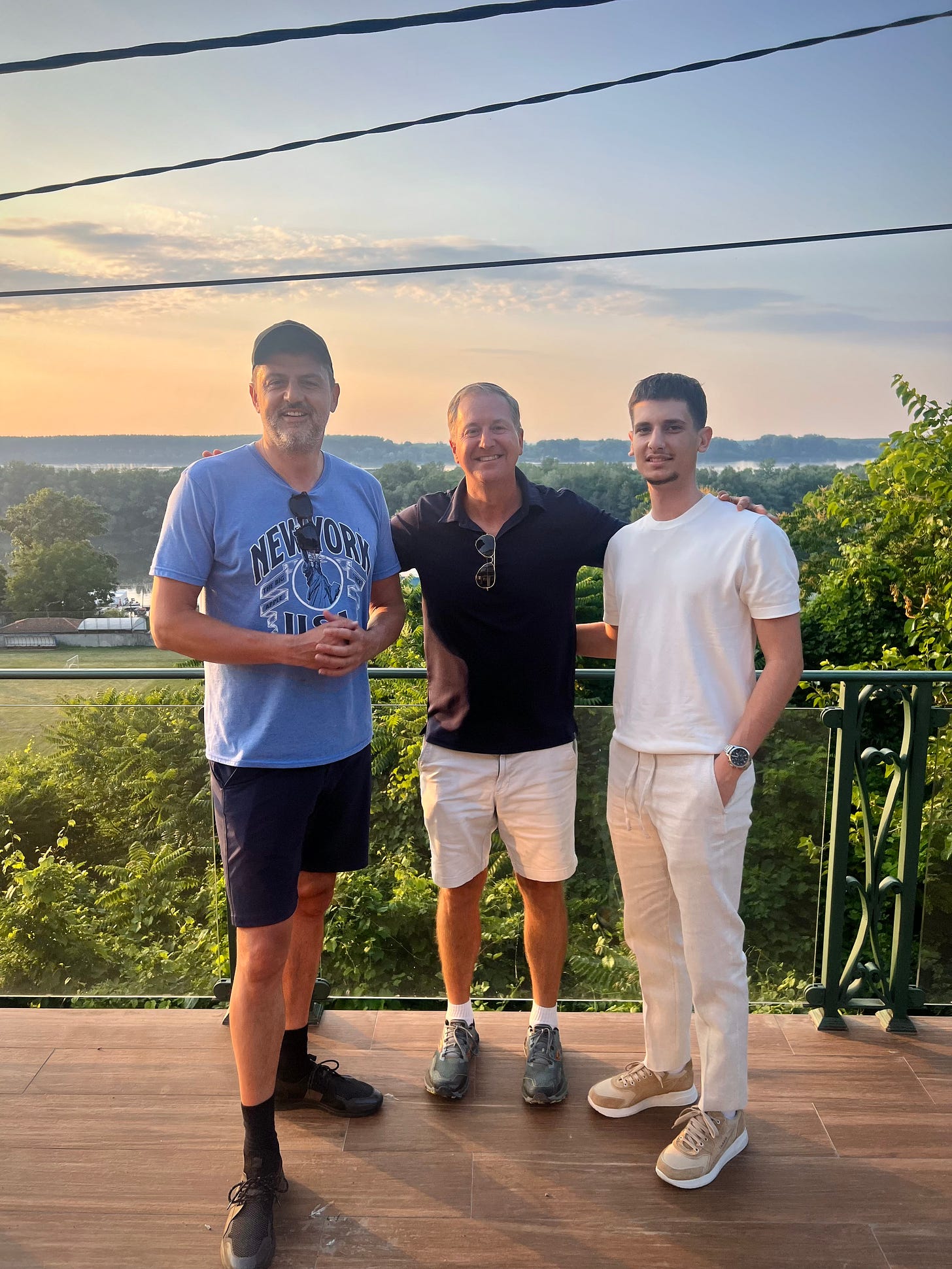Belgrade Rising: A Miami Perspective on Serbia’s Future
I was recently invited to speak at the Pupin Initiative Forum in Belgrade, to help foster U.S.-Serbia relations. I left with a sense that Serbia, like Miami, is standing on the edge of transformation.
I recently spent four days in Belgrade, Serbia—a country I had never visited before. The primary reason for my trip was to speak at the Pupin Initiative Forum, a nonprofit committed to strengthening U.S.-Serbia ties through nonpartisan dialogue and collaboration, especially around economic opportunity. But I left with much more than a speaking engagement—I left with a sense that Serbia, like Miami, is standing on the edge of transformation.
On my first night, I attended a private reception at the U.S. Ambassador’s residence. The newly appointed ambassador hadn’t yet arrived, but we were welcomed by Chargé d’Affaires Alexander Titolo, who hosted us at the beautiful American residence in Belgrade.
Some of the conversations I had there served as a reminder of the enduring complexities between the U.S. and Serbia—especially since the NATO bombing campaign of the 1990s, the remnants of which still scar parts of the city.
At the reception, I met George Friedman, the American geopolitical strategist and keynote speaker for the event. But perhaps more importantly, I was immersed in conversations—off stage and on—that laid the groundwork for deeper insights about Serbia’s past, present, and future.
Serbia at the Crossroads
In a private meeting prior to the conference, I sat down with Joseph Boski, Economic Chief at the U.S. Embassy in Serbia. He painted a compelling picture of Serbia today: a country that is not part of the EU, but one that "excels with the EU." Its currency has remained stable for eight years, pegged to the euro, and per capita, Serbia ranks near the top globally for foreign direct investment (FDI). Most FDI comes from Germany, Austria, Italy, France—and the United States.
Yet the story is more complex.
More than 50% of Serbia’s economy is still tied up in state-owned enterprises. Positions in those firms often go to loyalists of the ruling Serbian Progressive Party, which has been in power for 14 years. Additionally, it’s difficult for average Serbians to move their capital into global markets. As a result, real estate has become the primary investment asset, inflating local markets and limiting economic diversification.
Complicating Serbia’s position further is its geopolitical balancing act. Russia backs Serbia’s claim to Kosovo (which the U.S. recognizes as independent), and has a stake in the country’s energy sector. China—on the back of its Belt and Road Initiative—is focused on Serbia’s copper and steel. In May 2024, Chinese President Xi Jinping visited Belgrade, underscoring this transactional friendship.
Yet Serbia is not a puppet of any great power. Since the war in Ukraine began, the government has largely remained neutral, emphasizing the importance of national sovereignty. Over 100,000 anti-Putin Russians have relocated to Serbia since 2022, many of whom are now launching startups and bringing entrepreneurial energy to Belgrade.
And a number of U.S. companies have large offices here, including Microsoft, which opened an office here 20 years ago and boasts over 700 highly talented employees in Belgrade. Other recognizable tech companies — including Cisco, Oracle, and Databricks — also have offices here, primarily because there is so much tech talent in Serbia.
Everyone I met in Belgrade — from taxi drivers and in coffee shops and restaurants, absolutely everyone — spoke English, a testament to a highly educated and talented workforce.
From Miami to Belgrade: Lessons Shared
My panel at the Pupin Initiative Forum was titled: “U.S.–Serbia Business Perspectives: Investment, Trust & Opportunity.” I was honored to share the stage with an insightful group: Tihomir Bajić, Managing Partner at X& Ventures and a Serbian businessman with deep U.S. ties who moderated our discussion; Marija Živanović-Smith, a Serbian-American executive and Chief Marketing & Communications Officer at IEX; and David Schoch, an American who moved to Serbia two decades ago and now serves on the board of the Serbian Private Equity Association. Together, we explored what it takes to build trust and attract investment between our two countries.
I aimed to offer a perspective from Miami—what our city has learned, how it’s evolved, and what Serbia might draw from that experience.
I was born in Miami in the late 1970s, when it was a working- to middle-class city shaped by Cuban immigrants like my father and grandparents, who fled communism and found opportunity in South Florida. Over the decades, Cubans, Venezuelans, Colombians, Argentinians, Haitians, and more arrived—and Miami became a mosaic of immigrant ambition.
By 2020, Miami had become something else: a center of capital, influence, and innovation. The COVID-19 pandemic accelerated that shift. As other U.S. cities shut down, Florida remained relatively open—and people flocked in. When a Silicon Valley entrepreneur tweeted “Why don’t we all move to Miami?” our mayor responded simply: “How Can I Help?”
That phrase struck a chord—and I echoed it in Belgrade. I told the audience, “That’s the question your government should be asking of your entrepreneurs.” Regulation shouldn’t stifle business; it should get out of the way, or better yet, enable it through infrastructure, high-speed internet, and global connectivity.
The crowd nodded. Many already knew about Miami’s rise, and seemed encouraged to hear how Serbia could write a similar success story.
Belgrade: A City of Culture, Talent, and Possibility
What struck me most about Belgrade is how walkable, safe, and vibrant it is. I rarely needed a car. People fill the cafés and restaurants at all hours—not just visiting, but lingering. The Belgrade Waterfront, lined with bike and pedestrian paths, is transforming rapidly. The skyline I saw barely existed five years ago. Investment is pouring in — from many places, especially the United Arab Emirates.
There’s a spirit of creativity and calm here. I dined one night along the river, starting just before sunset, watching the city pulse with life—and yet no traffic jams, no frantic chaos.
I also had the chance to explore Serbia’s deep cultural and spiritual roots. I visited:
The Temple of Saint Sava—one of the largest Orthodox churches in the world, standing on the site where Saint Sava’s relics were burned in 1595 during Ottoman rule. A symbol of resilience and identity.
St. Mark’s Orthodox Cathedral, nestled in Tašmajdan Park—a peaceful retreat, home to the tomb of Emperor Dušan the Mighty.
Kalemegdan Fortress, perched above the Danube and Sava Rivers—where Roman, Byzantine, Ottoman, and Austro-Hungarian legacies collide. The military museum inside reminded me how often technology evolves but humanity doesn’t: new weapons, same wars. Let’s hope for a peaceful future.
The Nikola Tesla Museum, which honors the genius of this Serbian-American innovator. The exhibits were fascinating, but the museum itself felt outdated. For a man who helped shape the modern world, Tesla deserves a modern tribute—and perhaps even an educational center to inspire young scientists.
Gardoš Tower and the nearby Church of Saint Nicholas in Zemun—offering incredible views and a glimpse into Belgrade’s Austro-Hungarian past.
Real Relationships and Future Connections
What made this trip truly special were the relationships—new and old.
I reconnected with Luka Čubrilo and Peter Donic, two Serbian entrepreneurs I met in early 2024 in Miami. They’re part of a new wave of Serbian talent looking to connect Belgrade to global hubs like Miami. (Below are photos of us in Belgrade in June 2025 and Miami in March 2024).
I also met Vladimir Božović, Serbia’s Consul General in New York, for a Saturday afternoon visit. We talked casually about the challenges and opportunities Serbia faces, including efforts to open a new consulate in Miami—which would complement the existing ones in New York and Chicago. If Miami International Airport and Air Serbia can establish a nonstop Miami–Belgrade flight, it would quite literally be a new bridge between our cities.
And then there was Luka, a 20-year-old student from Kosovo now studying in Belgrade. His university classes were suspended due to political unrest, so he used the time to start a software development agency. It reminded me: Serbia’s future lies not only in foreign investment but in its own young, entrepreneurial generation.
What Attracts Investment? A Message to Serbia
Serbia is ripe with opportunity—but if it wants to attract more U.S. capital, it must commit to:
A strong rule of law
Transparent, functional financial institutions
The protection of private property rights
Maintaining a safe environment for families and workers
And above all, its talented workforce ready to build the future
Serbia has all the ingredients. It’s not yet a Dubai, a Miami, or a Madrid—but that’s a good thing. It’s not yet saturated. There’s room to grow. Investors like Jared Kushner and other early adopters are already planting seeds here.
Meanwhile, back in Miami, I’m meeting Serbians investing in our city—buying property, backing tech startups, building connections. The bridge is already forming.
And let’s not forget the digital nomads—young Americans leaving behind unaffordable U.S. cities in search of community, affordability, and opportunity. Many of them have found new homes in Medellín, Mexico City, Buenos Aires. Serbia could be next. Belgrade has the safety, culture, and cost advantage to compete for global talent and it is located at a very interesting place on the map (like Miami).
These nomads become informal ambassadors, influencers of their peers. Serbia should lean into these influential young people who can bring capital, talent, and energy—and become megaphones for why this country can be a home for people like them.
Serbia also might consider privatizing some of its state-owned enterprises. As mentioned above, these state assets make up more than 50 percent of the Serbian economy but the dynamism for growth is in the private sector. My suggestion is to start with a pilot project of transforming some of those state-owned enterprises into privately owned companies. A small experiment won’t hurt (just ask Nikola Tesla).
Looking Ahead
Two years ago, I met rising Serbian talent in Miami. And now, I’ve had the chance to join them in Belgrade—to experience it for myself and see the amazing place that it truly is.
Soon, Serbia will host a global business expo in 2027, welcoming over 100 countries for a three-month showcase. It's the kind of event that can shift global perceptions. But Serbia’s real story won’t be written in pavilions—it will be written in partnerships.
I believe Belgrade can become a place where people convene, connect, and collaborate—just like Miami has.
And when you make it to Miami, let me know. Through the Economic Club of Miami, I hope to help foster more connections like the ones that brought me here. Let’s look back on this moment years from now and say: that’s when it began.




